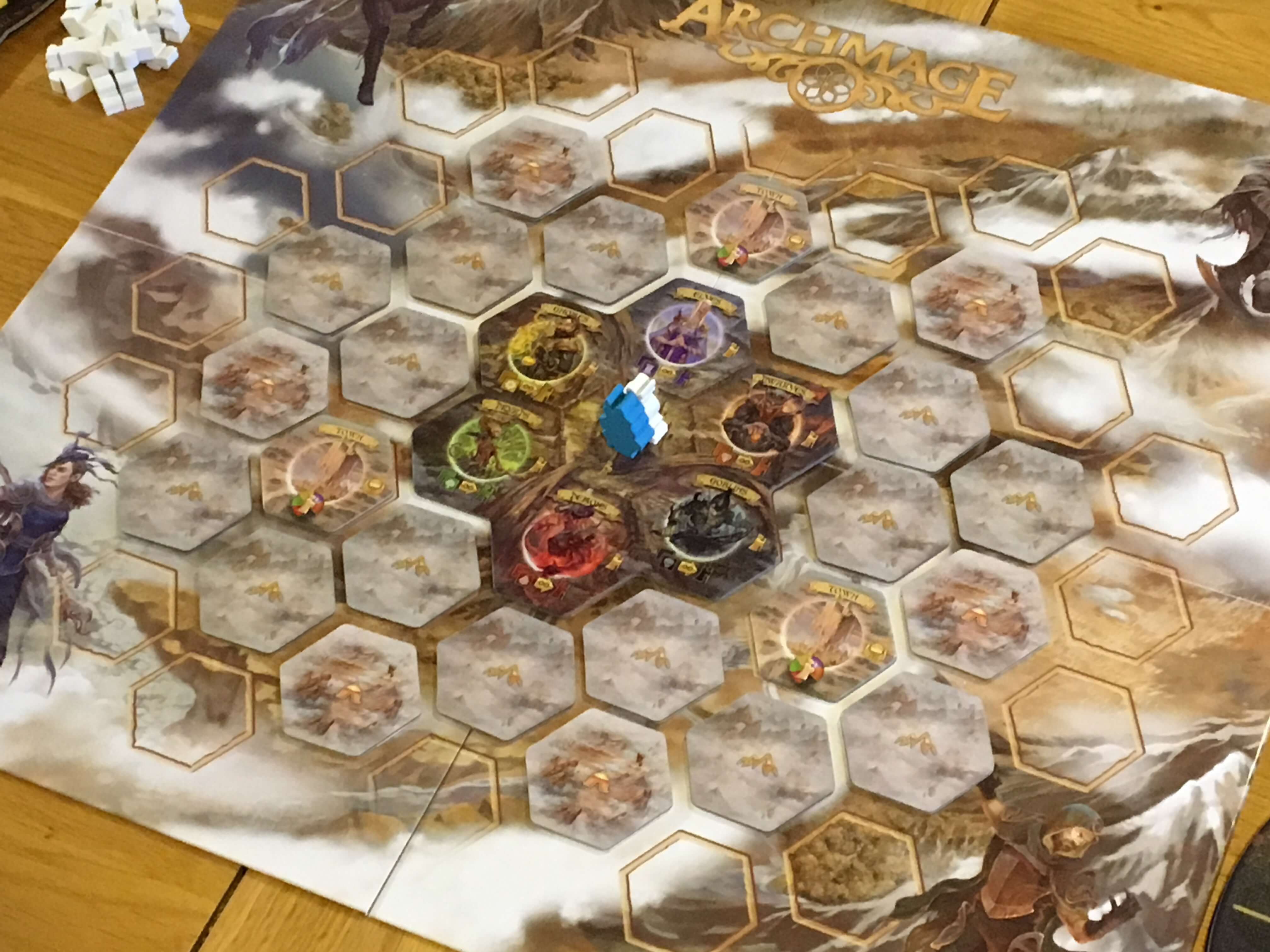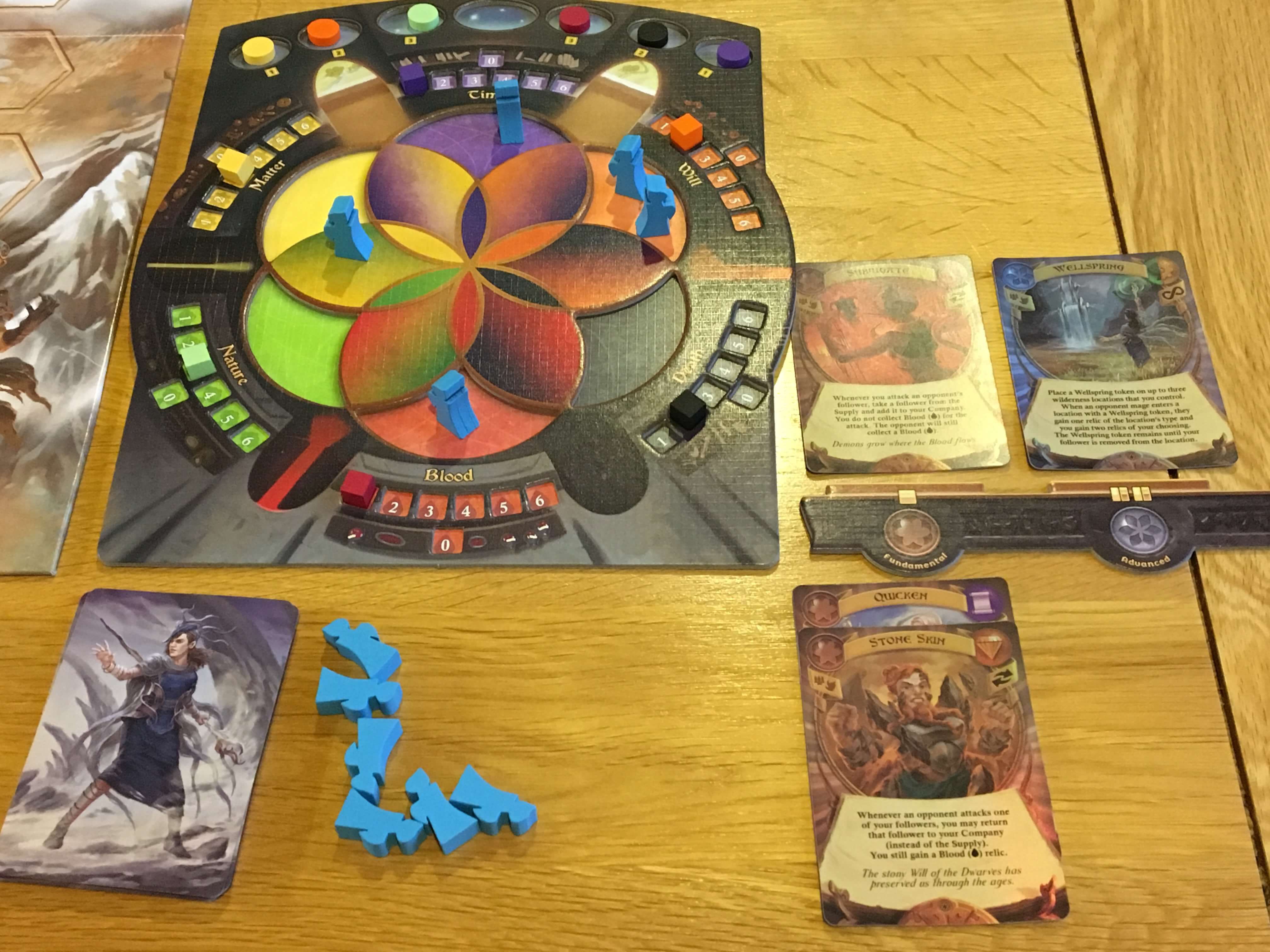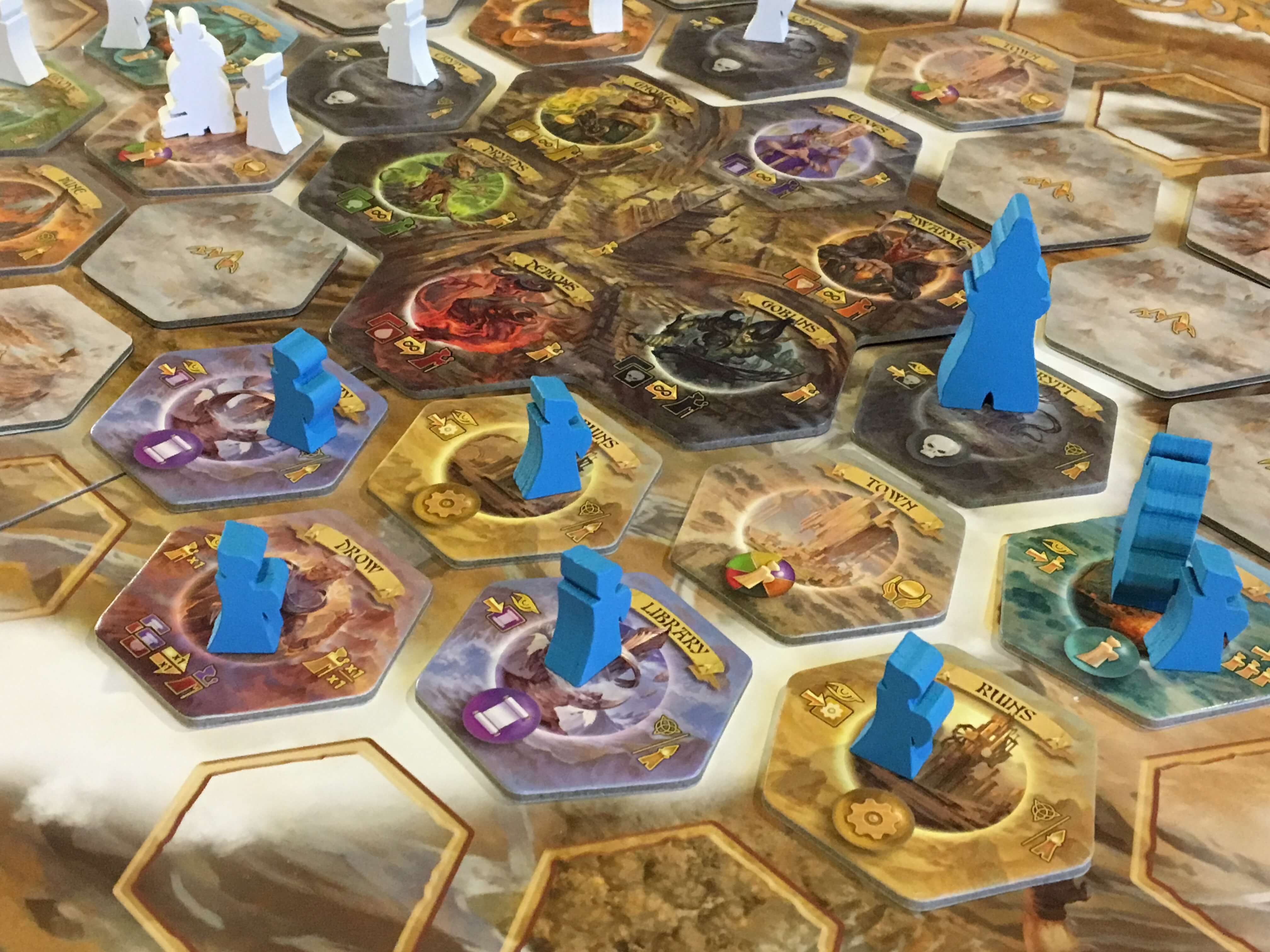Archmage review — Sorcery
Race to fill the power vacuum left in the wake of a fallen Archmage.
- The theming for Starling Games’ Archmage is high fantasy at its most classical, with magic, demons, elder races and all the trappings that come with the territory. As a board game however, Tim Heerema’s design is full of surprises, ranging from how incredibly beautiful a design it has to how it plays in such a fast, straightforward way. Archmage is one of the most intriguing games that I played in 2018, but does it have lasting appeal?
Overview
In Archmage, players are young, aspiring mages, each of whom has an entourage of sorts, but very little by way of real power. Following an occurrence known as The Ending, the previous Archmage, presumably dead, is absent and the civilised races are scattered across various camps and enclaves around the world. Now gathered at the cursed Tower of Magic, these mages will strike out on their own and stop at nothing — including facing each other down — to become the new Archmage.
Archmage is described by the publisher (accurately, I would say) as a thematic eurogame. In practical terms, Archmage blends elements of resource collection, deck building and area control from eurogames inside the kind of roleplaying, exploration based structure of a thematic game. Games usually play out at anywhere between ninety minutes and two hours thanks to a finite number of rounds. The amount of rounds are defined by the player count and tracked on the player boards within spaces that thematically represent the alignment of planets.
As the game goes on the players will move around a modular board, flipping randomised tiles to reveal towns, settlements wilderness locations and mythic races that each provide a different benefit. Apprentices can be left behind to claim control of specific tiles, whilst others allow recruitment, collection of relics and the teaching of powerful spells. The latter act of learning spells (which begin at a basic level, but can be traded up by combining the different base sources) is a fundamental way of gaining power and asserting oneself in the role of Archmage.
At the end of the final round, each player completes their final turn and updates their spellbook and other aspects of the board as normal. Then, each player (in turn order) scores their final position at the end of this turn, but before the next player takes a turn. This may seem odd, but is basically ensures that the final player isn’t able to simply scour their opponents presence from the board. Both spells and area control score points, with more powerful spells scoring higher and area control measured based on how much influence each player has relative to the others.

Components
2018 was an exceptional year in board gaming when it comes to component quality, and as such, I’ve largely ran out of superlatives. The problem there is that I think Archmage might actually have the highest production quality of any game I’ve played, outside of the hugely overproduced miniatures games from CMON and the like. The artwork in Archmage verges on breathtaking, with spell cards that feature impressive, original artwork and tiles that bring the world alive in an exceptional way.
The player boards are double-thick card, each of them featuring several indents to hold magical relic counters, planets and apprentice meeples. It’s not simply the fact that these boards are indented which is impressive, it’s also the fact that they are a work of art in themselves — with a beautiful, functional design that looks fantastic and has both practical and thematic relevance.
Other components are just as good. The instruction manual is superb, with lots of lore and interesting detail at the beginning, leading to a clear and straightforward set of instructions about how each turn plays out, including the phases before and after the actual player actions. Examples are used for almost every section and the whole game can be learnt within a couple of sample turns. The wooden pieces that represent mages, mage towers, apprentices and so on are all customised and very well cut. There’s literally nothing to complain about here.

Turn structure
For all of its thematic and visual grandeur, Archmage is remarkably simple to play. At the beginning of their turn, a player performs a few simple cleanup actions — removing any temporary spell tokens such as wards and then moving one of their planets closer to the alignment (in the centre of their board.) This allows them to take one relic in the colour of magic that corresponds to the planet that was moved. During this phase, any spells used (and gained or lost) in the last turn will also be prepared, but that’s a simple matter of moving them from one side of a spell track to the other. With this done, the player may then take their actions.
There are two phases to the actual action phase, with the first being movement. Simply put, the player moves their mage figure up to five spaces, which can include exploring (flipping) undiscovered hex tiles by paying one movement point. Any time a mage moves over a space, they may leave behind an apprentice, who will effectively exert control over that space. With this done, the player will be able to do one of a few actions based on which location they come to rest at.
This phase (known as Journey’s End) will allow the player to do things such as gather (at town locations.) which allows them to collect relics in the magical colours, depending upon which locations they have placed followers on. Settlements all the mage to recruit, which allows them to add followers into their entourage (which is limited at the beginning of the game.) Enclaves allow initiation, which requires two relics of the colour shown on the enclave, but it allows the player to train an apprentice in that colour as well. This means that the player can then take the Fundamental level spell of that colour from their deck and potentially use it on later turns.
There are a few other actions available such as attacking the apprentices left behind by other mages, or placing defensive wards that cost a movement point for opposing players to remove (in effect, protecting your own apprentices.) There are, of course, also locations that allow two apprentices in neighbouring magical fields to learn Advanced or even Master level spells by combining their knowledge, but that’s actually a similar action to drawing a Fundamental spell, albeit with more prerequisites. Casting spells will usually depend on the text printed on them in terms of timing and effect, but in all cases spells can have powerful effects on the game state and must be used effectively to ensure victory.
Once the player has taken their turn, play passes to the next player and so on until the planets are all aligned and the final turn is complete. At this point players will perform the final scoring that I described earlier and the new Archmage will be crowned. Archmage does feature a fully realised solo mode in which players compete against a character known as The Warlord, who comes with his own spells, meeples and other components, as well as a clear set of rules within the instruction manual.

Game experience
There are several things that I like about Archmage and perhaps only one thing that I don’t, so let’s get that out of the way first. I’ve already mentioned that Archmage is described as a thematic eurogame, the theme itself is only really present in the artwork, the concept and opening narrative about mages striving to become the Archmage. There are no event cards or story elements baked into the actual gameplay, so there’s no real flavour written into the game – even though I do think that the game is capable of creating its own story with each play.
With that said, I do still love playing Archmage, regardless of any perceived lack of story content. There are several reasons for this, but in the main I like the game so much because it looks fantastic and whilst a lack of event or similar features might be a slight concern, that same omission means that turns are incredibly fast and very, very slick. After a few rounds of gameplay, all players should have a very clear understanding of how each action works and when they can do it. The spells have some specific rules that need to be heeded, but broadly speaking, there is no in game text to read or interpret, which can tend to slow this kind of game down.
On the note of pure gameplay, Archmage is also very satisfying to play. It’s a fast paced, mechanically straightforward game that results in big, visible changes on the board. Towers are built, apprentices will be left on the map and ward tokens will spill outwards from the colourful mage meeples. Most importantly, spells will be learned and often, cast — and it is these arcane invocations that make Archmage truly exciting. Most spells feel powerful but balanced – allowing players to draw extra followers, place vines that slow movement or even to swap spaces on the board.
I also like the fact that Archmage doesn’t tend to focus on aggressive spells. Yes, some spells do target others and kill their minions or steal their relics, but the cost for casting them and the relative ease at which any losses can be replaced keeps things very balanced, meaning that unfocussed attacks will likely do the caster more harm than the victim, in the long run. This encourages smart play and will lead many players to focus on spells that benefit their strategy, rather than detract from those of others. I suppose that if you were hoping for more confrontation, then the downside is that you won’t really find it here in the same way as you might in a game with a more complex combat and spellcasting system.

Conclusion
Overall, I think Archmage is a beautiful game that is welcome in my collection for many reasons, but not least because of how easy it is to pick up and play, and because of the wide, family audience that it can serve. The complexity and perhaps the imagery mean that it excludes children under about ten, but it’s likely to be a popular choice for families of around that age and upwards, which gives a feeling not dissimilar to settling down to watch an engaging but straightforward blockbuster like Peter Jackson’s The Lord of the Rings. The production quality ensures that Archmage never looks out of place even among the most lavish collection, making it an all round excellent investment.
A copy of Archmage was provided for review purposes. You can find out more about it on the website of publisher Starling Games.

Comments are closed.